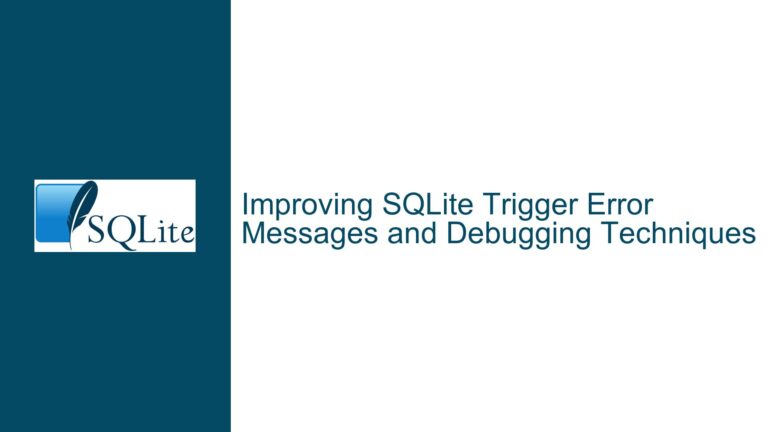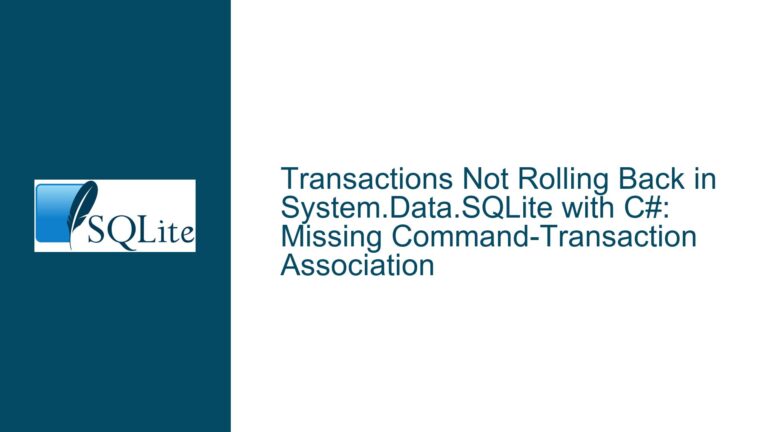Analyzing SQLite Vulnerability Detection: Static Analysis vs. Fuzzing
The Role of Static Analysis and Fuzzing in SQLite Vulnerability Detection
SQLite, as a lightweight, embedded database engine, is widely used across various applications due to its reliability and simplicity. However, ensuring its robustness against vulnerabilities is a critical task. This post delves into the effectiveness of static analysis and fuzzing techniques in identifying vulnerabilities within SQLite, particularly focusing on version 3.32.0. The discussion highlights the strengths and weaknesses of these methods, providing insights into why fuzzing has proven more effective than static analysis in the context of SQLite.
Static analysis involves examining the source code without executing it, aiming to identify potential issues such as uninitialized variables, unreachable code, or security vulnerabilities. On the other hand, fuzzing is a dynamic testing technique that involves feeding the software with malformed or unexpected inputs to uncover crashes, memory errors, or other unintended behaviors. While both methods aim to improve software reliability, their effectiveness varies significantly depending on the nature of the software being tested.
In the case of SQLite, static analysis has been found to generate a high number of false positives, making it less practical for identifying real vulnerabilities. This is largely due to SQLite’s architecture, which consists of a set of API calls that can be invoked in various orders and with different parameters. Static analysis tools often fail to account for the context in which these API calls are used, leading to reports of issues that would never occur in practice. For instance, a static analysis tool might flag a memory allocation that is never deallocated, but in reality, the corresponding deallocation is handled by a different API call that the tool cannot correlate.
Fuzzing, however, has proven to be highly effective in uncovering vulnerabilities in SQLite. By generating and testing a vast number of malformed SQL commands, fuzzers can identify edge cases that lead to crashes or incorrect behavior. For example, a fuzzer might insert random characters into an SQL command, remove parts of the command, or replace expected values with unexpected ones. This approach has led to the discovery of several bugs in SQLite, including issues with the query optimizer and memory management.
The effectiveness of fuzzing in SQLite is further enhanced by the database’s extensive testing framework, which includes a large suite of regression tests and a dedicated test harness. This framework allows developers to quickly identify and fix issues uncovered by fuzzing, ensuring that the database remains robust and reliable. Additionally, the SQLite development team has documented their testing process in detail, providing valuable insights into how fuzzing can be effectively integrated into the development workflow.
Challenges and Limitations of Static Analysis in SQLite
Static analysis, while theoretically capable of identifying a wide range of issues, faces several challenges when applied to SQLite. One of the primary limitations is the high rate of false positives. Static analysis tools often lack the context necessary to accurately assess the behavior of SQLite’s API calls, leading to reports of issues that are not actually problematic. For example, a tool might flag a potential memory leak because it cannot determine that a particular API call will always be paired with a corresponding cleanup function.
Another challenge is the complexity of SQLite’s codebase. SQLite is designed to be highly modular, with many components that can be combined in various ways. This modularity makes it difficult for static analysis tools to accurately model the interactions between different parts of the code. As a result, these tools may miss critical issues or generate misleading reports.
Furthermore, static analysis tools are often limited in their ability to detect certain types of vulnerabilities. For example, they may struggle to identify issues related to concurrency or race conditions, which are more effectively uncovered through dynamic testing methods like fuzzing. Additionally, static analysis tools may not be able to detect vulnerabilities that arise from the interaction between SQLite and the underlying hardware or operating system.
Despite these limitations, static analysis can still be a valuable tool for identifying certain types of issues in SQLite. For example, it can be useful for detecting coding standards violations, potential buffer overflows, or the use of deprecated functions. However, it is important to recognize that static analysis is not a silver bullet and should be used in conjunction with other testing methods, such as fuzzing, to achieve comprehensive coverage.
Best Practices for Fuzzing SQLite and Addressing Discovered Vulnerabilities
Fuzzing has proven to be an invaluable tool for uncovering vulnerabilities in SQLite, but it is important to approach it with a clear strategy to maximize its effectiveness. One of the key best practices is to use a diverse set of fuzzing techniques to ensure comprehensive coverage. This includes both mutation-based fuzzing, which involves making small changes to existing inputs, and generation-based fuzzing, which involves creating entirely new inputs from scratch. By combining these approaches, developers can uncover a wider range of vulnerabilities.
Another important best practice is to integrate fuzzing into the continuous integration (CI) pipeline. This allows for the automatic execution of fuzz tests whenever changes are made to the codebase, ensuring that new vulnerabilities are quickly identified and addressed. Additionally, it is important to maintain a large and diverse corpus of test cases to use as input for the fuzzer. This corpus should include both typical and edge-case inputs to ensure that the fuzzer can explore a wide range of possible behaviors.
When a vulnerability is discovered through fuzzing, it is important to thoroughly analyze the issue to understand its root cause. This may involve examining the code, running additional tests, or consulting with other developers. Once the root cause has been identified, the next step is to develop a fix and verify that it resolves the issue without introducing new problems. This process should be documented in detail to ensure that the issue can be effectively addressed in future releases.
In addition to fixing the immediate issue, it is also important to consider whether similar vulnerabilities may exist elsewhere in the codebase. This may involve conducting a broader review of the code or running additional fuzz tests to identify any related issues. By taking a proactive approach to addressing vulnerabilities, developers can ensure that SQLite remains a reliable and secure database engine.
Finally, it is important to share the results of fuzzing efforts with the broader SQLite community. This can be done through forums, mailing lists, or other channels where developers can discuss their findings and collaborate on solutions. By sharing knowledge and experiences, the community can work together to improve the overall quality and security of SQLite.
In conclusion, while static analysis and fuzzing are both valuable tools for identifying vulnerabilities in SQLite, fuzzing has proven to be more effective in practice. Static analysis is limited by its high rate of false positives and inability to account for the context in which SQLite’s API calls are used. Fuzzing, on the other hand, has uncovered numerous vulnerabilities by testing the database with a wide range of malformed inputs. By following best practices for fuzzing and addressing discovered vulnerabilities, developers can ensure that SQLite remains a robust and reliable database engine.






